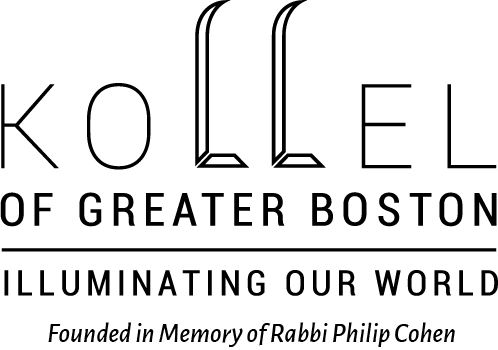Print PDF
By Rabbi Naftoly Bier
In this week’s פרשה, we learn of two monumental, eternal בריתות, covenants that are formalized between Hashem and Avraham Avinu, our patriarch Avrohom.
The first time we are introduced to the idea of a ברית, covenant, is in פ‘ נח , Genesis 9:11-12, where the Almighty declares that he will never destroy living beings or the earth. He then designated the rainbow as an everlasting reminder to us of His decision. We are constantly made aware of the momentous truths on which the welfare of humanity depends; i.e. Shabbos, Bris Milah, Tefillin… It is not merely enough for us to intellectually comprehend, but we need continuous reminders.
ברית can be translated as a covenant, an oath, a bond, and as an agreement between two parties; where an act is demonstrated to eternalize the idea or to make it enduring, irrevocable, and an innate, immutable facet of Hashem’s world.
We are introduced this week to the first covenant between Hashem and Avrohom Avinu, Genesis 15:18-21. This type of ברית is stated in Yirmiyahu 34:18. From this we learn that it was an acceptable manner in which covenants were established. The “two parties” would take a live animal, split its body in half and would walk through between the dismembered parts. Initially it seems to be a very strange ritual!
Rav Yosef Albo, ספר העיקרים שער ד, פרק כ“ד enlightens us with a profound explanation. The concept was based on the means of demonstrating that to truly engender an everlasting bond of mutual, irreversible, and relentless love, care, responsibility, and dedication to one another, to attain a level of unity where each party obligates to experience the other’s joy, concern, pain, suffering as if it’s their own, necessitates a bonding of two people merging into one body, one entity. This isn’t easily attained by thought.
When a person or any living creature has pain in one part of their body, the whole body suffers; it’s a law of nature. If for example a limb is disconnected from the body, then the rest of the body doesn’t feel it.
To demonstrate this idea, Hashem commanded Avrohom Avinu to take animals and dismember them in the middle, placing each half corresponding to the other half. He then walked between the pieces to demonstrate that just as these pieces were one entity – one body – and each part felt the pain of the other, and only death caused a separation, so too the two parties are inaugurating immutable, irreversible unity that can’t be terminated. The practical, logical, and honest application is that when one feels, senses, or perceives the affliction, detriment, or injury to the other, one immediately is there to assist. Simultaneously, one always shares their inner thoughts, passions, and sensibilities.
The גמטריא, numerical value of אהבה, love, is 13, the same as אחד, one; for true love is when an unequivocal sense of oneness is achieved. This explains why immediately Hashem revealed to Avraham Avinu the 400 years of hardship; doesn’t a covenant of love dictate caring and benevolence?
At that moment, Hashem was inculcating in Avrahom Avinu that true love had been consummated! “I feel the pain your descendants are going to experience; their pain is Mine, I empathize with you for עמו אנוכי בצרה, I will endure your sorrow as if it’s mine!
But in case, Avrohom Avinu’s descendants, Klal Yisroel, are not worthy that Hashem bestow His infinite kindness and mercy on them, Hashem proclaimed a second covenant, which is ברית מילה, the covenant of circumcision (17:7-13). The fact that the covenant is indelibly etched on the male’s body is a mystical connection that can never be relinquished, for it is a perpetual sign of allegiance to Hashem for an individual’s lifetime and eternally for the Jewish people.
Rav Yosef Albo lived in Spain during one of the most difficult eras of Jewish history – from 1380 to 1444. It was the time of relentless religious persecution on the part of the Catholic Church and Christian society in general. The first Spanish Inquisition took place in 1391. The Bubonic Plague’s impact was still felt, the Hundred Years War between France and England started in 1337, and the pope took residence in France from 1309-1377. All this strife and insecurity was blamed on the Jews.
Rav Yosef poignantly writes, “Even in these terrible times when we are mired constantly in pain and persecution, we shouldn’t lose hope; for though today we are akin to a person on his deathbed, we should never lose hope. For when we see the אות הברית, the sign of Hashem’s covenant of love inscribed on us, we know without doubt that due to this closeness we will return to our original state of strength, glory, and spirituality.” The message is eternal, invigorating, and inspirational for us in these difficult times.
After the עקדה, Akeida, Genesis 22:16, “Hashem swears… because you have done this and not withheld from me your only son, I will bless you…” The רמב“ן , Nachmanides explains that though this was promised already (13:27) it now became a covenant not dependent on our actions, that despite everything, we would one day witness the complete redemption and rectification of all, with the coming of Moshiach. This idea is repeated by the רמב“ן in .דברים לג:מ May we merit to see כבוד שמים speedily restored.
